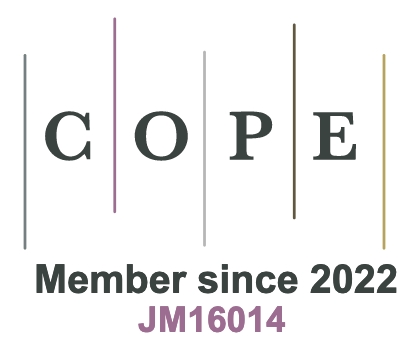REFERENCES
2. Atkins P, De Paula J. Atkins’ physical chemistry. Oxford University Press 2010. Available from: http://www.rnlkwc.ac.in/pdf/study-material/chemistry/Peter_Atkins__Julio_de_Paula__Physical_Chemistry__1_.pdf. [Last accessed on 18 Nov 2024].
3. Lide DR. CRC handbook of chemistry and physics. CRC Press; 2004. Available from: http://webdelprofesor.ula.ve/ciencias/isolda/libros/handbook.pdf. [Last accessed on 18 Nov 2024].
4. Wu Z, Bei H, Otto F, Pharr G, George E. Recovery, recrystallization, grain growth and phase stability of a family of FCC-structured multi-component equiatomic solid solution alloys. Intermetallics 2014;46:131-40.
5. Wu Z, Bei H, Pharr G, George E. Temperature dependence of the mechanical properties of equiatomic solid solution alloys with face-centered cubic crystal structures. Acta Mater 2014;81:428-41.
7. Jin K, Gao Y, Bei H. Intrinsic properties and strengthening mechanism of monocrystalline Ni-containing ternary concentrated solid solutions. Mat Sci Eng A 2017;695:74-9.
8. Tóth BG, Péter L, Révész Á, Pádár J, Bakonyi I. Temperature dependence of the electrical resistivity and the anisotropic magnetoresistance (AMR) of electrodeposited Ni-Co alloys. Eur Phys J B 2010;75:167-77.
9. Tanji Y. Debye temperature and lattice deviation of Fe-Ni (fcc) alloys. J Phys Soc Jpn 1971;30:133-8.
10. Anderson OL. A simplified method for calculating the debye temperature from elastic constants. J Phys Chem Solids 1963;24:909-17.
11. Laplanche G, Gadaud P, Horst O, Otto F, Eggeler G, George E. Temperature dependencies of the elastic moduli and thermal expansion coefficient of an equiatomic, single-phase CoCrFeMnNi high-entropy alloy. J Alloys Compd 2015;623:348-53.
13. Petit AT, Dulong PL. Research on some important points of heat theory 1819. Available from: https://web.lemoyne.edu/giunta/petit.html. [Last accessed on 18 Nov 2024]
14. Ye Y, Musico B, Lu Z, et al. Evaluating elastic properties of a body-centered cubic NbHfZrTi high-entropy alloy - A direct comparison between experiments and ab initio calculations. Intermetallics 2019;109:167-73.
15. Ge H, Song H, Shen J, Tian F. Effect of alloying on the thermal-elastic properties of 3d high-entropy alloys. Mater Chem Phys 2018;210:320-6.
16. Liu Z, Wu H, Ren W, Ye ZG. 4.05 - Piezoelectric and ferroelectric materials: fundamentals, recent progress, and applications. In: Comprehensive Inorganic Chemistry III (Third Edition). Oxford: Elsevier, 2023. pp. 135-71.
17. Zhang J, Li H, Kuang Q, Xie Z. Toward rationally designing surface structures of micro- and nanocrystallites: role of supersaturation. Acc Chem Res 2018;51:2880-7.
18. Paidar V. Displacive processes in systems with bcc parent lattice. Prog Mater Sci 2011;56:841-51.
19. Fujita H, Ueda S. Stacking faults and f.c.c. (γ) → h.c.p. (ϵ) transformation in -type stainless steel. Acta Metall 1972;20:759-67.
20. Zaddach AJ, Niu C, Koch CC, Irving DL. Mechanical properties and stacking fault energies of NiFeCrCoMn high-entropy alloy. JOM 2013;65:1780-9.
22. Zhao S, Stocks GM, Zhang Y. Stacking fault energies of face-centered cubic concentrated solid solution alloys. Acta Mater 2017;134:334-45.
24. Guittoum A, Layadi A, Bourzami A, et al. X-ray diffraction, microstructure, Mössbauer and magnetization studies of nanostructured Fe50Ni50 alloy prepared by mechanical alloying. J Magn Magn Mater 2008;320:1385-92.
25. Ali ML, Haque E, Rahaman MZ. Pressure- and temperature-dependent physical metallurgy in a face-centered cubic NiCoFeCrMn high entropy alloy and its subsystems. J Alloys Compd 2021;873:159843.
26. Gao MC, Zhang B, Guo SM, Qiao JW, Hawk JA. High-entropy alloys in hexagonal close-packed structure. Metall Mater Trans A 2016;47:3322-32.
27. Richards JW. Relations between the melting points and the latent heats of fusion of the metals. Available from: https://core.ac.uk/download/pdf/228639996.pdf. [Last accessed on 18 Nov 2024].
28. Zhao S, Stocks GM, Zhang Y. Defect energetics of concentrated solid-solution alloys from ab initio calculations: Ni0.5Co0.5, Ni0.5Fe0.5, Ni0.8Fe0.2 and Ni0.8Cr0.2. Phys Chem Chem Phys 2016;18:24043-56.
29. Manzoor A, Zhang Y, Aidhy DS. Factors affecting the vacancy formation energy in Fe70Ni10Cr20 random concentrated alloy. Comput Mater Sci 2021;198:110669.
30. Guan H, Huang S, Tian F, Lu C, Xu Q, Zhao J. Universal enhancement of vacancy diffusion by Mn inducing anomalous Friedel oscillation in concentrated solid-solution alloys. arXiv. [Preprint.] Mar 27, 2023 [accessed 2024 Nov 18]. Available from: https://doi.org/10.48550/arXiv.2303.15172.
31. Manzoor A, Arora G, Jerome B, Linton N, Norman B, Aidhy DS. Machine learning based methodology to predict point defect energies in multi-principal element alloys. Front Mater 2021;8:673574.
32. Razumovskiy VI. Thermodynamics of vacancy formation in the CoCrFeMnNi high entropy alloy from DFT calculations. AMMS 2022;8:962.
33. Wynblatt P, Chatain D. Modeling grain boundary and surface segregation in multicomponent high-entropy alloys. Phys Rev Mater 2019;3:054004.
35. He Y, Jia J, Wu H. First-principles investigation of the molecular adsorption and dissociation of hydrazine on Ni–Fe alloy surfaces. J Phys Chem C 2015;119:8763-74.
36. Li W, Peng X, Ngan AHW, El-awady JA. Surface energies and relaxation of NiCoCr and NiFeX (X = Cu, Co or Cr) equiatomic multiprincipal element alloys from first principles calculations. Modelling Simul Mater Sci Eng 2022;30:025001.
37. Zhou X, Curtin WA. First principles study of the effect of hydrogen in austenitic stainless steels and high entropy alloys. Acta Mater 2020;200:932-42.
38. Guy AG. Introduction to materials science. McGraw-Hill; 1972. Available from: https://archive.org/details/introductiontoma0000guya/page/n5/mode/2up. [Last accessed on 18 Nov 2024]
39. Hull D, Bacon DJ. Introduction to dislocations. Elsevier; 2011. Available from: https://books.google.com/books?hl=zh-CN&lr=&id=MvSvqll6ct0C&oi=fnd&pg=PP1&dq=introduc[…]ons+hull%C2%A0&ots=DaCh4rB0J0&sig=lgM_yrey_gM8VIFQKmGIDYhJ74A. [Last accessed on 18 Nov 2024]
40. Larosa CR, Shih M, Varvenne C, Ghazisaeidi M. Solid solution strengthening theories of high-entropy alloys. Mater Charact 2019;151:310-7.
41. Wu Y, Zhang F, Yuan X, et al. Short-range ordering and its effects on mechanical properties of high-entropy alloys. J Mater Sci Technol 2021;62:214-20.
42. Wu X. Chemical short-range orders in high-/medium-entropy alloys. J Mater Sci Technol 2023;147:189-96.
43. Shuang S, Hu Y, Li X, et al. Tuning chemical short-range order for simultaneous strength and toughness enhancement in NiCoCr medium-entropy alloys. Int J Plasticity 2024;177:103980.
45. Laplanche G, Gadaud P, Bärsch C, et al. Elastic moduli and thermal expansion coefficients of medium-entropy subsystems of the CrMnFeCoNi high-entropy alloy. J Alloys Compd 2018;746:244-55.
46. Liu Z, An P, Wang G. Effect of alloy elements on iridium shear modulus by ab initio analysis. J Mol Model 2021;27:294.
47. Naeem M, He H, Harjo S, et al. Extremely high dislocation density and deformation pathway of CrMnFeCoNi high entropy alloy at ultralow temperature. Scripta Mater 2020;188:21-5.
48. Hearn EJ. Strain energy. In: Mechanics of materials 1 (Third Edition). Oxford: Butterworth-Heinemann, 1997. Available from: https://books.google.com/books?id=7eKu5Kh0dHcC&printsec=frontcover&hl=zh-CN#v=onepage&q&f=false. [Last accessed on 18 Nov 2024].
49. Dieter GE, Bacon D. Mechanical metallurgy. In: McGraw-hill New York, 1961. pp. 193. Available from: https://archive.org/details/mechanicalmetall00diet. [Last accessed on 18 Nov 2024]
51. Rogal Ł, Czerwinski F, Jochym P, Litynska-dobrzynska L. Microstructure and mechanical properties of the novel Hf25Sc25Ti25Zr25 equiatomic alloy with hexagonal solid solutions. Mater Design 2016;92:8-17.
52. Liu Y, Zheng G. First-principles calculation and kink-dislocation dynamics simulation on dislocation plasticity in TiZr-based concentrated solid-solution alloys. Metals 2023;13:351.
53. Meng H, Duan J, Chen X, Jiang S, Shao L, Tang B. Influence of local lattice distortion on elastic properties of hexagonal close-packed TiZrHf and TiZrHfSc refractory alloys. Phys Status Solidi B 2021;258:2100025.
54. Mohammed MT, Khan ZA, Siddiquee AN.
55. Wang B, Zhang P, Liu H, Li W, Zhang P. First-principles calculations of phase transition, elastic modulus, and superconductivity under pressure for zirconium. J Appl Phys 2011;109:063514.
56. Archer RR, Lardner TJ. An introduction to the mechanics of solids. McGraw-Hill; 1978. Available from: https://books.google.com/books/about/AN_INTRODUCTION_TO_MECHANICS_OF_SOLIDS.html?id=A6gXogEACAAJ&redir_esc=y. [Last accessed on 18 Nov 2024]
57. Shiraishi T, Yubuta K, Shishido T, Shinozaki N. Elastic properties of As-solidified Ti-Zr binary alloys for biomedical applications. Mater Trans 2016;57:1986-92.
58. Hao P, Chen P, Deng L, et al. Anisotropic elastic and thermodynamic properties of the HCP-Titanium and the FCC-Titanium structure under different pressures. J Mater Res Technol 2020;9:3488-501.
59. Bao X, Li X, Ding J, Liu X, Meng M, Zhang T. Exploring the limits of mechanical properties of Ti-Zr binary alloys. Mater Lett 2022;318:132091.
60. Moskalenko V, Smirnov A. Temperature effect on formation of reorientation bands in α-Ti. Mat Sci Eng A 1998;246:282-8.
61. Li Q, Zhang H, Li D, Chen Z, Qi Z. The effect of configurational entropy on mechanical properties of single BCC structural refractory high-entropy alloys systems. Int J Refract Met H 2020;93:105370.
62. Panina E, Yurchenko N, Tojibaev A, Mishunin M, Zherebtsov S, Stepanov N. Mechanical properties of (HfCo)100−x(NbMo)x refractory high-entropy alloys with a dual-phase bcc-B2 structure. J Alloys Compd 2022;927:167013.
63. Hu Y, Bai L, Tong Y, et al. First-principle calculation investigation of NbMoTaW based refractory high entropy alloys. J Alloys Compd 2020;827:153963.
64. Mubassira S, Jian W, Xu S. Effects of chemical short-range order and temperature on basic structure parameters and stacking fault energies in multi-principal element alloys. Modelling 2024;5:352-66.
65. Hodkin E, Nicholas M, Poole D. The surface energies of solid molybdenum, niobium, tantalum and tungsten. J Less Common Met 1970;20:93-103.
66. Hu Y, Sundar A, Ogata S, Qi L. Screening of generalized stacking fault energies, surface energies and intrinsic ductile potency of refractory multicomponent alloys. Acta Mater 2021;210:116800.
67. Hua G, Li D. Generic relation between the electron work function and Young’s modulus of metals. Appl Phys Lett 2011;99:041907.
68. Scallan P. 4 - Material evaluation and process selection. In: Process Planning, Oxford: Butterworth-Heinemann; 2003. pp. 109-70.
69. Savitskii EM, Burkhanov GS. Interatomic bond, crystal structure, and principal physical properties of refractory metals. In: Physical metallurgy of refractory metals and alloys, Boston, MA: Springer US, 1970. pp. 7-58.
70. Xiong W, Guo AX, Zhan S, Liu C, Cao SC. Refractory high-entropy alloys: a focused review of preparation methods and properties. J Mater Sci Technol 2023;142:196-215.
71. Nye JF. Physical properties of crystals: their representation by tensors and matrices. Phys. Today 1957. Available from: https://books.google.com/books?id=ugwql-uVB44C&printsec=frontcover&hl=zh-CN#v=onepage&q&f=false. [Last accessed on 18 Nov 2024].
72. Shirvanimoghaddam M, Shirvanimoghaddam K, Abolhasani MM, et al. Towards a green and self-powered internet of things using piezoelectric energy harvesting. IEEE Access 2019;7:94533-56.
73. Yong AP, Islam MA, Hasan N. A review: effect of pressure on homogenization. Sigma J Eng Nat Sci 2017;35:1-22. Available from: https://sigma.yildiz.edu.tr/storage/upload/pdfs/1635938490. [Last accessed on 18 Nov 2024]
74. Matteucci ME, Brettmann BK, Rogers TL, Elder EJ, Williams RO 3rd, Johnston KP. Design of potent amorphous drug nanoparticles for rapid generation of highly supersaturated media. Mol Pharm 2007;4:782-93.
77. Wang GJ, Vitek V. Relationships between grain boundary structure and energy. Acta Metall 1986;34:951-60.
78. Olmsted DL, Foiles SM, Holm EA. Survey of computed grain boundary properties in face-centered cubic metals: I. Grain boundary energy. Acta Mater 2009;57:3694-703.
79. Rohrer GS. The role of grain boundary energy in grain boundary complexion transitions. Curr Opin Solid State Mater Sci 2016;20:231-9.
80. Shuang F, Aifantis KE. Using molecular dynamics to determine mechanical grain boundary energies and capture their dependence on residual Burgers vector, segregation and grain size. Acta Mater 2020;195:358-70.
81. Zhou X, Li X, Lu K. Size dependence of grain boundary migration in metals under mechanical loading. Phys Rev Lett 2019;122:126101.
82. Wang J, He Y, Li J, Kou H, Beaugnon E. Strong magnetic field effect on the nucleation of a highly undercooled Co-Sn melt. Sci Rep 2017;7:4958.
83. Ohring M. 7 - Mechanical behavior of solids. In: Engineering materials science. San Diego: Academic Press; 1995. Available from: https://books.google.com/books?id=G36o9PM8aLIC&printsec=frontcover&hl=zh-CN#v=onepage&q&f=false. [Last accessed on 18 Nov 2024].
84. Song C, Ai J, Xu D, Wen S, Zeng F, Pan F. Magnetic transition and structural evolution in NiCo/Ag multilayers. Jpn J Appl Phys 2006;45:4035.
86. Nanda KK, Maisels A, Kruis FE. Surface tension and sintering of free gold nanoparticles. J Phys Chem C 2008;112:13488-91.
87. Guimarães J, Rios P. The mechanical-induced martensite transformation in Fe–Ni–C alloys. Acta Mater 2015;84:436-42.
88. Pei Z, Yin J, Hawk JA, Alman DE, Gao MC. Machine-learning informed prediction of high-entropy solid solution formation: beyond the Hume-Rothery rules. npj Comput Mater 2020;6:308.
89. Zhang L, Chen H, Tao X, et al. Machine learning reveals the importance of the formation enthalpy and atom-size difference in forming phases of high entropy alloys. Mater Design 2020;193:108835.








